- Flatwoods Monster Fallout 76 Guide - April 24, 2023
- Fallout London Guide - March 12, 2023
- Liberty Prime Guide - February 11, 2023
Introduction
While these games seem significantly different at first glance, they’re more similar than you might think. Both envelop the player in dark, dangerous, and violent alternate worlds. But which offers the most intriguing premise? Can we reach a conclusion as to which is better? Or is that the wrong question to ask in this case?
I’ve spent a lot of time with each game in both series, so in this article, I’ll delve deep into the details to uncover what sets these two franchises apart.
What are the Main Differences Between Fallout vs Bioshock?
First, let’s investigate where the differences lie. While thematically similar, it’s also true that these games are worlds apart in many instances.
Linear vs the Open World
Fallout offers the player a large, sprawling, non-linear open world to explore, which is usually a video game representation of an American metropolitan area and its suburbs, like DC, Las Vegas, or Boston.
Bioshock might take part in a city too, but these games are much more limited in how much they allow for player exploration.
Protagonist Expression and Morality
Fallout enables you to create a character and become whoever you want to be: you can be good, bad, or neutral, and take on whatever side quests you want. Bioshock does have slight ending variation, but the story has a much more cinematic feel to it.
The only choices you really have in these games are what Plasmid/Vigors you choose and what you decide to upgrade, as well as some minor morality-driven choices that may change the ending slightly.
Narrative Direction and Character Arcs
Fallout ultimately features many great stories packed into its main and side quests, but Bioshock focuses on one impactful cinematic story. This also means you’ll barely see any cutscenes in Fallout, whereas there are several in Bioshock (both in-engine and CGI).
This isn’t to say there aren’t some thoroughly intriguing stories told in Fallout, but the focus in that series is on having the freedom to do a ton of different stuff and meet loads of different people.
Gameplay Style Continuity Across Each Entry
There are only three Bioshock games that were released a relatively short time apart and so the gameplay style remains the same between them. With Fallout having changed hands, it’s more difficult to play each game sequentially.
Having said this, you don’t need to have played prior or subsequent Fallout games to understand the one you’re playing. Bioshock games are best played in order.
Modding
Modding is a heavily utilized and embraced component of Fallout, but not so much so for Bioshock. This is because of the freedom the open world allows for: modders have run wild the Bethesda’s tools to completely overhaul the Fallout games, to the extent that a modded Fallout: New Vegas is widely considered to be the by far the best way to experience the game.
Bioshock has mods too, but they’re usually in the form of community-made bug patches or cosmetic character alterations.
Realistic vs Fantasy
While neither game could be considered to be wholly realistic, Fallout tries to paint a picture of something that could actually happen: it’s a futuristic setting resultant of postulating what a post-apocalyptic America might look like.
Bioshock’s settings are set in the past, and they’re far removed from anything humans could accomplish. Moreover, Vigors and Plasmids are essentially magical powers, and something like the biochemical substance of ADAM is rooted in science fiction and fantasy rather than reality.
Graphics
Fallout
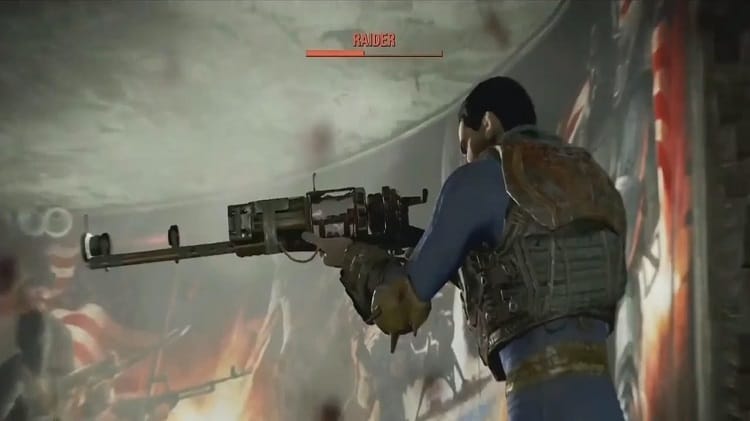
Graphically, Fallout has always been a little behind — at least when compared to other cutting-edge titles of the time. Fallout 2 was criticized for its lack of graphical progression in comparison to the first game; similarly, many were stumped as to why v didn’t look leaps and bounds ahead of Fallout 3 and New Vegas.
Ultimately, the modern Fallout games aren’t bad-looking titles when looking at them statically, with most of the issues coming from when the game’s in motion. Facial animations, for example, are noticeably stiff. Limb animations also still leave something to be desired — even in the latest entry.
Seeing your own character or others run, walk, or swim looks a bit off, and when paired with the admittedly hilarious bugs that are common within the series, Fallout’s attempt at realism can seem pathetic at times.
Having said this, Fallout 4’s depiction of a dilapidated Boston, or Fallout 3’s irradiated DC, can look pretty spectacular as a setting.
One thing I’ve always been impressed about with Fallout is its attention to detail: the world is filled with stuff: relics from a bygone era that have been carefully rendered make these worlds feel like living, breathing, organic places. There’s nothing else that hones this aesthetic, either.
Beaming white smiles of an archetypal nuclear family decaying on a poster amidst atomic disaster: It’s unmistakably Fallout, and the graphical detail goes a long way in honing that familiar flavor of black comedy.
Bioshock
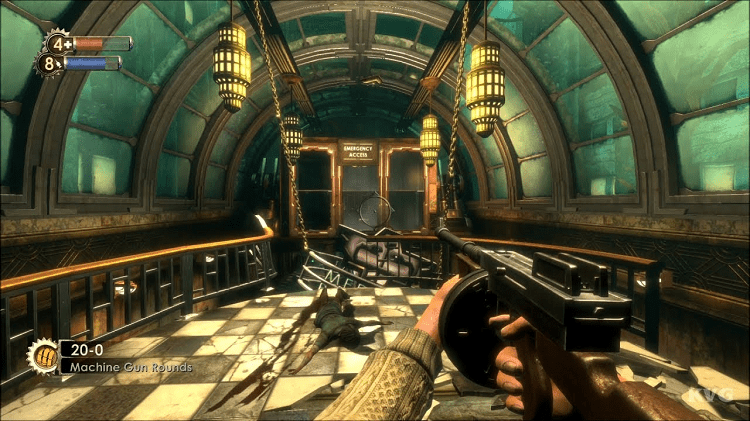
Bioshock has a much more timeless aesthetic on the whole. The game has certainly aged in the same ways Fallout has, but thanks to a unique art direction and a more cinematic feel, the game still looks visually very smart.
Helping the game age more gracefully is the remastered versions of Bioshock 1 and 2, which is now the only version of the game available through Steam.
The remastered versions updated the textures to a higher resolution but retained everything else. As such, players now experience the original in its best form.
The game makes masterful use of contrasting colors and darkness to create a foreboding atmosphere, and rather than attempting to be as realistic as possible, it went for a more stylized look that’s distinct to the series.
Character models show their age, but the animations and cartoonish designs have a flair that transcends the datedness. This is no more evident than in Bioshock Infinite: the Disney-Esq characters and luminous color pallet will look good for a long time to come.
Execution of Narrative
Fallout
Fallout makes heavy use of world-building to tell its stories. It isn’t so much one central story as it is many narratives connected by the same cohesive world.
Like most great role-playing games, the story is made by the player: there’s a rough central narrative framework encapsulating each Fallout game, but the real story is dictated by your own unique adventure — how you choose to play, the choices you make, and how your version of this character traverses the world.
Each game has some sort of anchoring theme, be it finding your father, your lost son, or locating the water chip for your vault. But this central narrative takes a backseat to the roleplay elements. In fact, I’d say many of the side quests are considerably more interesting than each game’s main quest line, and that’s by design.
You’ll remember your decision to either blow up Megaton or save its people, or to help Mr. Tenpenny rid the outskirts of ghouls or help those ghouls overthrow their oppressors, much more than you will the penultimate moments of finding out what happened to your father.
In the same vein, most of Fallout’s most intriguing narrative elements come from pouring through documents and terminal entries. Brilliant writing is there for the curious, with some of the most gripping stories of these worlds being purely text-based.
It’s Fallout’s immersive world, and the unique tale you craft for yourself, that leaves the impression, rather than any of those stories individually (least of which the main quest lines!).
Bioshock
In many ways, Bioshock is like a theme park. It pulls you down a rabbit hole of jaw-dropping scenery and set pieces, and doesn’t really ever stop for downtime. Whether you’re playing Bioshock 1, 2, or Infinite, the game entertains as a thrilling film would.
It’s full of shocking twists and turns with carefully developed characters. Its stories are steeped in the philosophical dogma of its villains, and the revelations which unfold by the end of the trilogy hit like nothing else.
The games do a great job of stringing together contrasting themes to paint a picture, and this is particularly evident in the first game. Each new area leads you down a treacherous path to an ultimate encounter with an enemy whose essence seeps through the pours of their own personalized area of Rapture.
Environmental storytelling is blended with fantastic voice work creating a chilling atmosphere throughout.
This is an almost wholly curated adventure barring some smaller choice-driven elements, and in an industry that prioritizes the grand open world as the barometer for the impressiveness of interactive entertainment, Bioshock’s approach is an appreciated adjunct in 2023.
World
Fallout
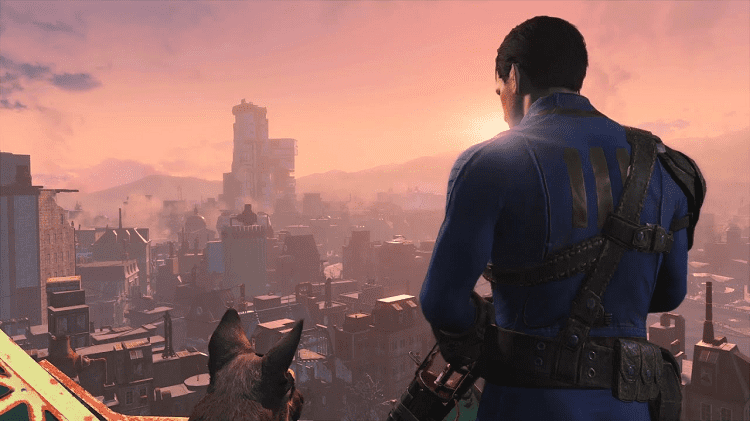
Fallout’s setting is something only the open-world game can do justice to. I love exploring every nook and cranny of abandoned buildings and searching through draws to find pre-war relics, notes, and trinkets left by those long gone.
I love chatting with the village elders found and hearing them hark back to random periods across the vast 500-year post-war history.
Exploration and adventure are one of gaming’s oldest selling points, and in the wasteland, the tattered world is your oyster. More so than any other open-world title, I’m always astounded by the variety of locations within this series.
There’s always something new to stumble upon — a new Vault with a grizzly tale to behold; a strange settlement with a disturbing population. The developers have done their best to fill these worlds with unique locations and societies.
They’ve then deepened their relevance with reams of contextual info to sift through if you want to learn more. But the sheer vastness of it all doesn’t always pay off. Some quests feel a little weak, some choices can end up a bit meaningless, and some side quests feel laborious. Yet, overall, the complete package is excellent.
I also enjoy how each game has its own political factions, each of which presents objectively sound reasons for you joining forces with them or bringing them down.
The game drops you into a world full of choices but where most of those choices are an ambiguity. For that reason, the open worlds of the American wasteland never get old.
Bioshock
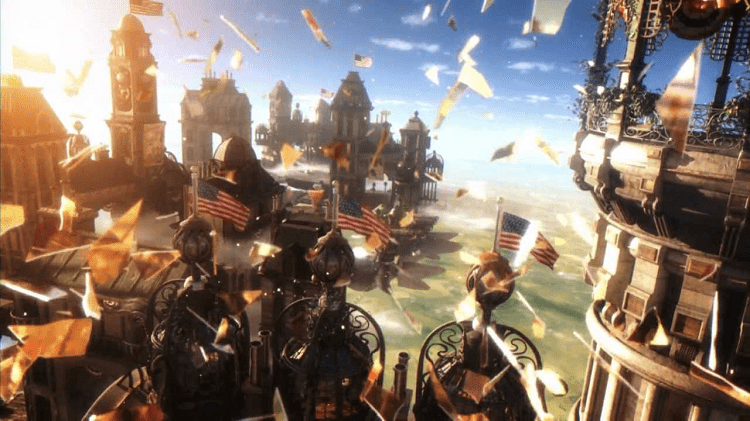
The utopia-gone-wrong trope has been a tried and true approach across all facets of media, but I’ve never quite read or watched something as unique as what I’ve played with Bioshock.
These games are masters at environmental storytelling, and with the vast majority of the game’s story taking place through disembodied voice, this is crucial.
The games constantly juxtapose beauty with decay and corruption. Delving deeper, they play with this contrast to create a grotesque, yet captivating contorted world.
Upbeat music billowing down a dark hallway illuminated only by the deep hue of the sea; The jovial demeanor of well-dressed crowds as they attend a racist raffle: these worlds could only exist as a fantasy, but they draw parallels with our own constantly.
The Bioshock series is ultimately a game with a lot to say, and so much of what it presents so brilliantly is thanks to the world’s design. Rapture and Columbia have heaps of character, and they’re the sort of places you’ll be stopping to examine every few seconds.
They consistently impress in the presentation of their stunning fractal design, right down to every inflammatory poster or piece of contextual dialogue delivered by an NPC.
Combat
Fallout
Originally, Fallout’s combat followed the format of traditional turn-based RPGs of the 1990s, but Bethesda cleverly merged this style with the first-person shooter.
If you wish, you can play the game entirely as an FPS, but then you’d miss the fun in VATS. Being able to methodically weigh up your chances of landing a killer blow, and then execute your target in glorious slow motion, simply never gets old.
The system took the satisfaction in landing a critical hit in classic RPGs and turned it up to eleven: limbs sever and explode into a red mist, and if you’re using a laser or plasma weapon, you might reduce your enemy to a pile of smoldering ash!
Despite its spectacular execution, this might still get old if it wasn’t for having such a wide array of weapons to choose from.
By the end of my playthrough of each game, I was carrying a dozen or so handguns and submachine guns, a selection of high-caliber rifles, laser weapons, alien weapons, miniguns, and portable nukes. Fallout 4 turns the power armor from previous games into a walking tank.
Even without VATS, Fallout functions as a satisfying FPS. Sometimes the bullet-sponge enemies dull the pace a bit, but then by that point, you’ve likely got the Fat Man by your side to nuke them into oblivion.
Bioshock
Bioshock’s combat is appealingly rhythmic. You’ve got all your classic ballistic weapons such as pistols, assault rifles, and shotguns, and each can be upgraded with a variety of exciting attachments. But it’s the synergy between these armaments and Plasmids or Vigours which sets the combat apart.
Maybe you’ll whip up a stampede of angry Splicers into a tornado launched from your fingertips. Perhaps you’ll throw your oppressors off by summoning a swarm of murderous crows whilst carefully picking them off from a distance. Vigors and Plasmids add a huge degree of strategy to classic FPS mechanics, and you’ll find the environment is rife with opportunities to use them to cause maximum damage. This is an immersive sim, so there’s a great deal of fun to be had in honing your own personal combat style.
Upgrading yourself and these abilities also presents as one of the only choice-driven elements of the game. Harvesting the required substrate to continually improve adds a constant moral dilemma, and the game cleverly tugs at you to make tough decisions.
A.I.
Fallout
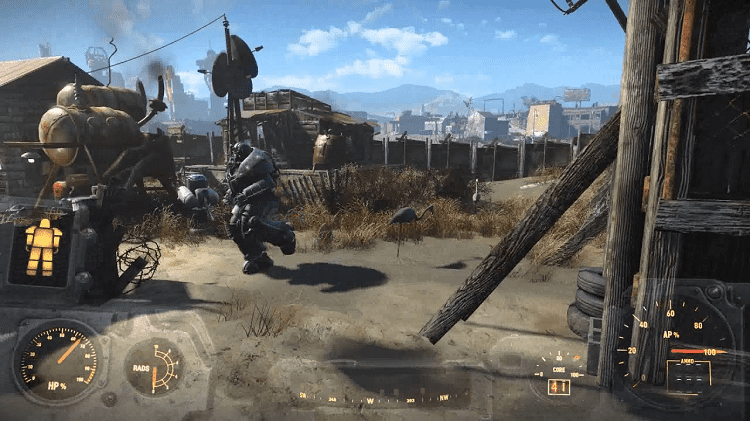
Fallout’s A.I. has never been the best, and in many cases, it is the source of the multitude of bugs that have plagued the series. It’s unlikely that throughout your 100-hour playthrough, you won’t encounter enemies clipping through geometry, poor pathfinding with your companions, and gimped combat.
You also won’t find much by way of tactical attributes amongst your human wasteland foes. Enemies often stand in plain sight to shoot you rather than taking cover, or haphazardly get behind cover that provides Despite this, there has been a concerted effort to improve a lot of the creatures for Fallout 4.
Death Claws now duck and weave realistically as you fight them and Mongrels maneuverer behind you to get a good run-up.
Feral Ghouls now effectively jump-scare the player from the shadows. Through a culmination of individualized animations and attack patterns, these enemies now feel much less like reskins of the same model.
Bioshock
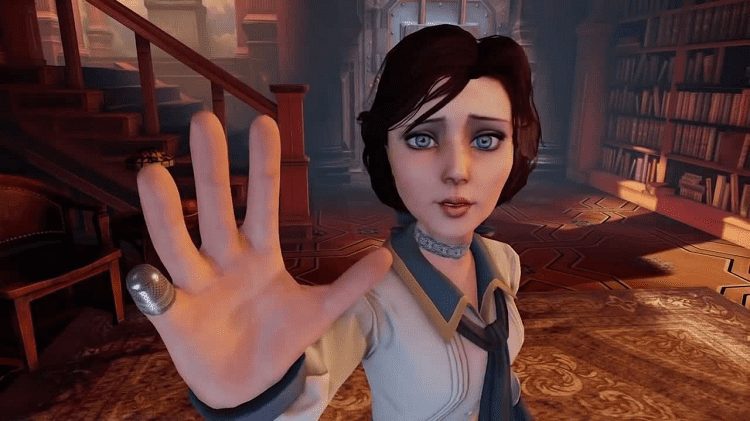
The A.I. in Bioshock takes on a few different roles. Many of these roles are similar to those utilized in the Fallout series, such as enemy combat tactics and companion interaction; but Bioshock’s are generally of higher quality due to a much more limited number of characters.
Compared to the dozens of NPCs you fight, talk to, and help in Fallout, each Bioshock game only features a handful of enemy designs. The difference is that each has impressively deep scripting for the time the games were made.
Splicers, the main enemy type of the first game, jump about organically, with the ability to scale walls and ceilings to get the drop on you. The player also witnessed the relationship between the Big Daddies and Little Sisters from the shadows: a creepy blend of Splicer harvesting and strange dialogue.
Bioshock Infinite made improvements for companion A.I. Elizabeth is the central character of the game, and a huge amount of effort has been included to make her feel believable, whether it’s through her quippy dialog, Disney-esq movement, or support during combat.
Her naivety to the world around her and the reactions she has to each set piece were one of the standout aspects of the game.
Replayability
Fallout
The Fallout series perfectly lends itself to being replayable. With the main story and each side quest having multiple approaches and subsequent conclusions, playing the game a second time and making different choices can change the outcome completely.
Of course, much of the replayability comes with the inherent nature of RPGs: your second, third, or fourth run can be played as a totally different character built with unique weapons and perk specializations.
What’s more, the region’s political stability is up to the player in many entries. You can shape the very fabric of a national society by choosing to aid one organization over the other and then steer the world in a totally different direction in your second run. The possibilities are endless.
Bioshock
Once you’ve finished Bioshock and its DLC, there’s not a great deal to go back for on account of how well the game steers its story. Most of the narrative of each game is built on (no pun intended) shock value, and once the revelations have revealed themselves, they can never have the same impact.
You could make different moral decisions which will ultimately make for a different ending cutscene, but to be honest, I just watched this on YouTube. It’s certainly not something you’d play the whole game through again to see.
There is some replayability to be had in specializing in different Plasmid or Vigor strategies, but again, wanting to play through the entire game for this is unlikely.
Music and Sound Design
Fallout
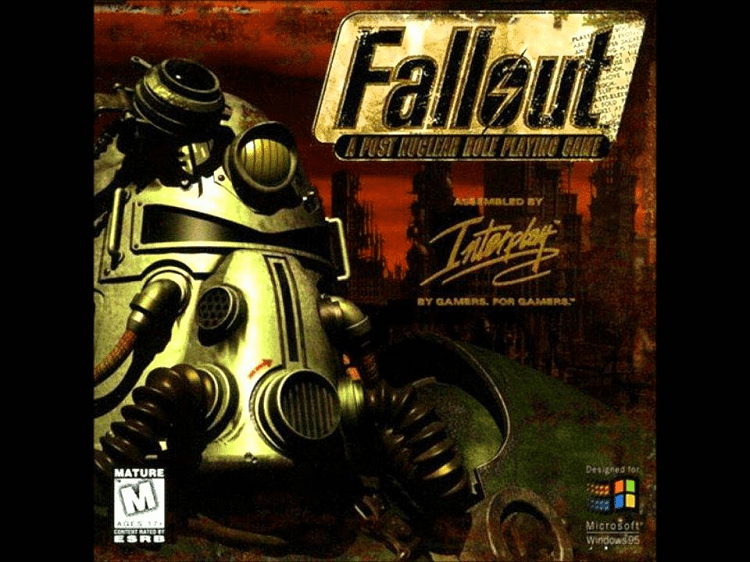
One of the things I love most about Fallout is its familiar sound: whether that be the memorable soundtrack, the thunderous rattling of a Gatling laser, or how it injects upbeat 1950s music into its dreary world.
The soundtrack’s mellow, military brass grounds the franchise in the somber reality of the post-apocalypse. This is then contrasted by chipper tunes from groups like The Ink Spots and Bob Crosby and The Bobcats. The music in these games is crucial in anchoring the games juxtaposing elements.
Of course, in a series about the destructive capabilities of humanity, every weapon in the game cracks impactfully with the sort of power you’d expect.
Sawn-off shotguns explode with a dash of gritty realism, while pre-war antique submachine guns and makeshift plasma weapons feel both powerful and like they’re about to fall apart. Audio is one area where Bethesda outshines the original developers, and it’s a big part of what Fallout is today.
Bioshock
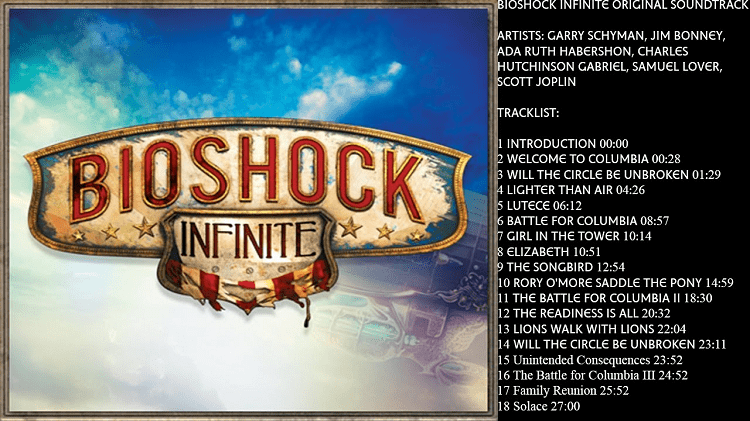
Bioshock’s music and sound design are more understated, but impressive nonetheless. Instead of trying to make a statement, music and sound design blend together to enhance masterful environmental storytelling.
An unnerving trickling leak in the distance, the cry of a blue whale overhead, the syncopated rhythms of 1920s Jazz echoing down a flickering florescent hallway: Bioshock1 and 2’s sounds may not have as much of a distinct identity of Fallout, but they are essential in creating its foreboding atmosphere.
Bioshock Infinite does the same but for its new environment. Where the first two games used music and sound to enhance the feeling of isolation, Infinite utilizes thematically written music played by enthusiastic performers. It fills the world with the sounds of bustling society which ultimately mask the horrors within.
The sound design is also essential for making Vigors and Plasmids feel powerful. The feeling of having bubbling molten lava drip from your palms or electricity crescendo from your fingertips owes a great deal to the sound design.
Which is Better?
So, we’ve explored a lot of detail in this article, but when it comes down to it, which game is better?
Personally, I enjoyed my time with the Bioshock series more. It’s a decidedly more polished product with a clearer direction, which is something I think Fallout struggles with given the nature of achieving its vast open world.
Both series are fantastic, but I fell in love with Bioshock’s quirky art style, philosophical narrative, addictive combat, and mind-bending conclusions. The series is a proponent of the less-is-more approach, which enables it to carefully hone and focus its strengths into one killer package.
Alternative Games to Fallout and Bioshock
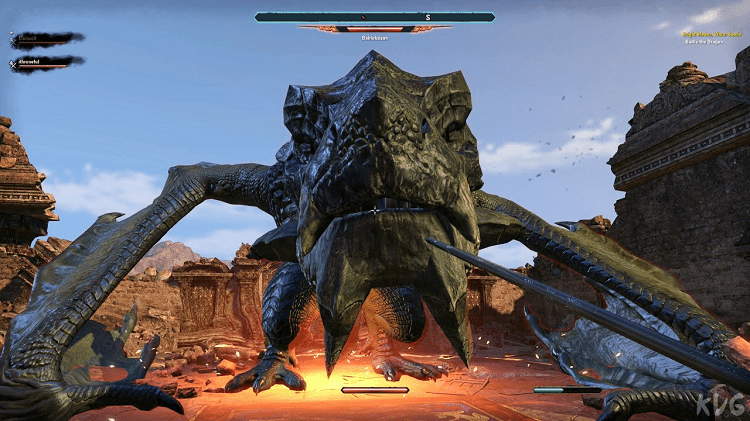
Fallout and Bioshock aren’t the only two franchises tackling the themes and gameplay styles we discussed. Here are some great alternative titles for each!
Fallout
- Metro
- The Elder Scrolls
- Borderlands
- Zero Sievert
- Stalker
- Ultima
- Cyberpunk 2077
- Rage
Bioshock
- The System Shock
- Prey
- Deus Ex
- Thief
- Dishonored
- Wolfenstein
- Half-Life
- Alien Isolation
Frequently asked questions
Question: Out of the several games in each series, which should I play first?
Answer: The answer is different for both series. The Bioshock games are best played in order as their stories link in with one another, so you’re best playing Bioshock 1 first. With Fallout, you have more options, as most are their own self-contained story and setting.
Personally, unless you’re looking to dive deep into the series, I’d avoid the first two titles (Fallout 1 and 2) as their controls and gameplay mechanics might be a little too outdated to handle at first. A perfect first option, in my opinion, is the latest title in the series: Fallout 4. It will appeal most to the modern gamer and is the easiest to jump into.
Question: I see both of these series have spawned a lot of DLC. Are these expansions worth it?
Answer: Having played all of the available expansions for both game series: most definitely. Bioshock Infinite’s Burial at Sea completely changes your perspective on the first game’s ending, and The Pitt and Far Harbour greatly enrich the already large and detailed open world of their respective games.
They’re absolutely worth your time, and if you’re on PC, there are usually some great bundle offers where you can get the base game with all available DLC.
Question: I’ve heard Fallout 1, 2, and Tactics are much more difficult to get into due to their outdated gameplay mechanics. Should I bother with these if I’ve played the newer titles?
Answer: A lot of mechanics haven’t aged well, and it’s also worth noting that there’s no console release of these titles so you’ll have to play on PC. Having said this, virtually any PC or laptop can run these titles, and the story is considered one of the most well-written in the entire series.
They’re worth experiencing if you love the lore and have already played the newer games. In fact, Fallout 1 and 2 are considered to have the best stories in the series, so at least check out a playthrough on YouTube even if you don’t fancy playing them!
Conclusion
I hope this article has provided you a solid comparison of both series. I love both franchises. Without question, I think you should play each of them. If you have any specific questions about either game, I highly recommend checking out the respective boards on Reddit for each game; r/Fallout and r/Bioshock. Have fun!

